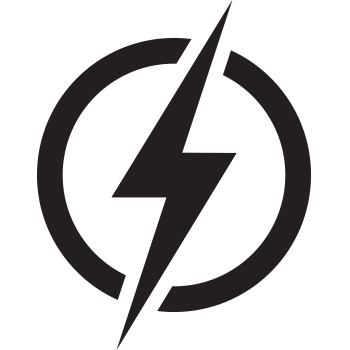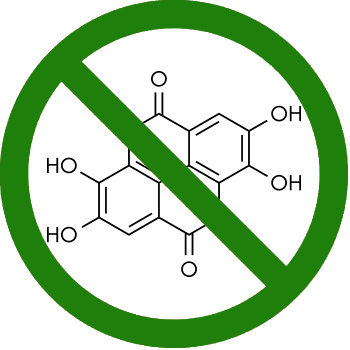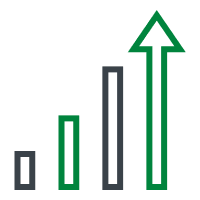An accurate and efficient way for monitoring the spread of pathogens through populations is vital for understanding epidemiological patterns and making more informed clinical decisions. One novel way epidemiologists are tracking the emergence of new variants and viral spread is extracting viral genomes from wastewater. Viral RNA extracted from wastewater is a useful tool for population-level pathogen detection because it is robust, inexpensive, and has been shown to correlate with clinical data.1 Also, unlike clinical sampling, screening wastewater for pathogens provides a clearer picture because it can track population-level asymptomatic spread as well. However, there are challenges to detecting viral presence in wastewater. Oftentimes concentrations of the virus are low, the viral genome is fragmented and mixed with other viral genome pieces, and there are high quantities of off-target nucleic acids from bacteria or humans. Additionally, extracting high quality nucleic acids from wastewater is notoriously difficult because it is extremely rich in PCR inhibitors from feces and the environment that obstructs enzymatic reactions necessary for downstream applications like NGS.
Overcoming Challenges for Accurate Wastewater Pathogen Detection
In an article published in Nature Microbiology in 2022, researchers used a highly effective solution for removing PCR inhibitors in combination with NGS and a novel bioinformatics technique to accurately detect the early emergence of specific SARS-CoV-2 strains in wastewater. The authors collected water samples from several Swiss wastewater treatment plants. After collection, the water samples were clarified by filtration, concentrated by centrifugation, and the RNA was extracted using a commercially available RNA extraction kit. However, the researchers wanted to ensure that the samples were pure enough for amplicon sequencing and opted to use Zymo Research’s One-Step PCR Inhibitor Removal Kit to eliminate PCR inhibitors from the recovered viral RNA.
Following PCR inhibitor removal, the extracts were prepared for sequencing using an amplicon-based technique consisting of reverse transcription followed by amplification targeting SARS-CoV-2 viral genomes, resulting in high-coverage, tiled cDNA amplicons of the viral genomes. Next, the amplicons were sequenced using Illumina paired-end sequencing, which sequences both ends of a given DNA fragment and aligns them as read pairs, enabling highly accurate read alignment and improved detection of genomic rearrangements.2 After sequencing, the researchers employed a computational tool they developed called COJAC (Co-Occurrence adJusted Analysis and Calling) to detect the co-occurrence of strain specific mutations on read pairs. This technique increases the confidence of strain presence and opens the possibility for earlier strain detection because of its sensitivity to low variant concentrations.3
Enabling Earlier Variant Detection Using Wastewater
To validate their technique, the authors collected samples from December 2020 to early February 2021 from two large cities in Switzerland, Vaud & Zurich, to compare how detection and transmission fitness advantage estimates from wastewater hold up against existing observations from clinical data. The researchers identified the presence and quantity over time of three SARS-CoV-2 strains: Alpha, Beta and Gamma. Of the three, only Alpha successfully became established in Switzerland. Based on clinical sequencing data, the Alpha strain was first detected in Vaud, Switzerland on December 21st, 2020, and in Zurich, Switzerland on December 18th, 2020. However, when samples taken from wastewater treatment plants in each city were sequenced and analyzed using COJAC, Alpha was detected about 2 weeks earlier than its detection in clinical samples. In addition, the researchers found that the wastewater transmission fitness advantage estimates for the Alpha variant were more precise than the estimates generated from clinical samples.3 Finally, the authors demonstrated that the Delta variant would have been detected in the wastewater of three major cites before the variant was detected in clinical samples despite high clinical sequencing rates (66-94%) in Switzerland at the time.3
Accurate Wastewater Pathogen Detection is Within Reach
In summary, wastewater sequencing data can be used to detect low-frequency pathogens and estimate their growth rate and transmission fitness advantage earlier and with fewer samples compared to clinical sampling. Utilizing the OneStep PCR Inhibitor Removal Kit, NGS and the bioinformatics method COJAC results in highly specific and effective pathogen detection that can be applied to other viruses of concern and could potentially be used to detect novel viruses present in historically under-sampled populations.
RECOVER INHIBITOR-FREE DNA/RNA FOR ACCURATE PCR & NGS RESULTS

Ultra-fast
Simple 5 Minute Protocol

Inhibitor Free DNA & RNA
Completely Remove Polyphenolics (i.e. Hematin, Melanin, Bile Salts, etc.)

Highest Yield
Consistently Recover ≥ 80% DNA & RNA
Citations
- Lin, X., Glier, M., Kuchinski, K., Ross-Van Mierlo, T., McVea, D., Tyson, J. R., Prystajecky, N., & Ziels, R. M. (2021). Assessing Multiplex Tiling PCR Sequencing Approaches for Detecting Genomic Variants of SARS-CoV-2 in Municipal Wastewater. mSystems, 6(5), e0106821.
- Illumina. Paired-End vs. Single-Read Sequencing. Retrieved September 5th, 2024, from https://www.illumina.com/science/technology/next-generation-sequencing/plan-experiments/paired-end-vs-single-read.html
- Jahn, K., Dreifuss, D., Topolsky, I., Kull, A., Ganesanandamoorthy, P., Fernandez-Cassi, X., Bänziger, C., Devaux, A. J., Stachler, E., Caduff, L., Cariti, F., Corzón, A. T., Fuhrmann, L., Chen, C., Jablonski, K. P., Nadeau, S., Feldkamp, M., Beisel, C., Aquino, C., Stadler, T., Beerenwinkel, N. (2022). Early detection and surveillance of SARS-CoV-2 genomic variants in wastewater using COJAC. Nature microbiology, 7(8), 1151–1160.
